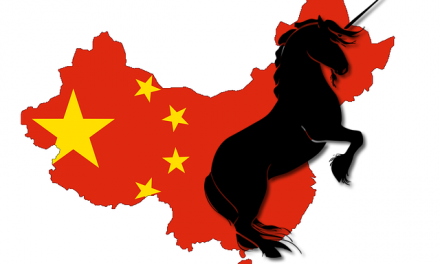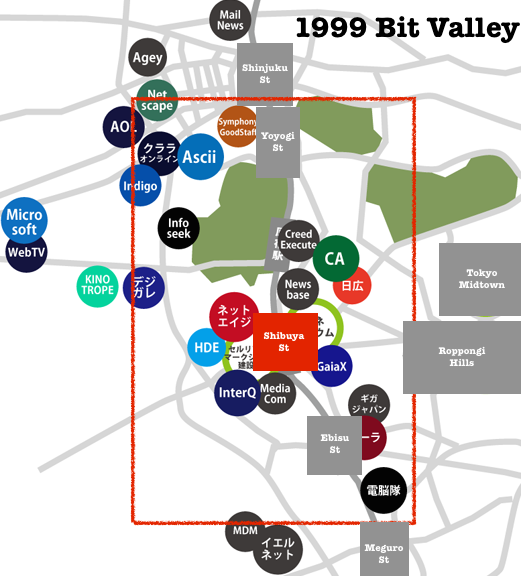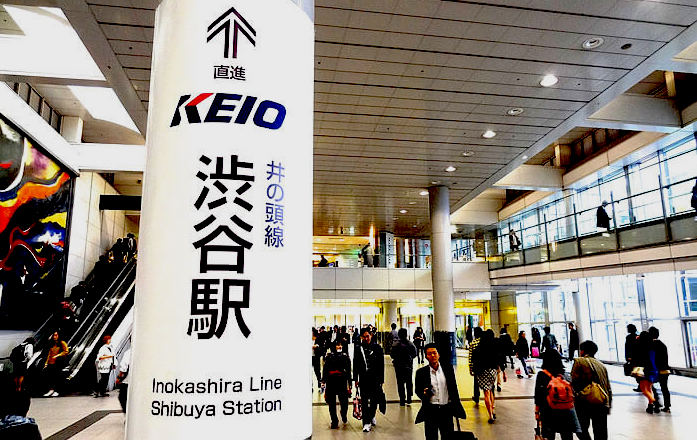
Bit Valley has become a tech startup mecca in Japan

Shibuya is well-known for the largest intersection in Japan (we call it “scramble intersection) where vehicles from all directions are stopped at a time for pedestrians. You could also see a whole bunch of cellphone addicts turning cities into increasingly hazardous hot spots in which zombified shoppers appear to be part of a vast game of human pinball.
If you’ve visited Shibuya before, you must know how crazy it is. The characteristics of the city are that there’re a number of shopping malls, stylish cafes, restaurants, and this city is basically for young people.
From a business perspective, Shibuya can also be described as a city for new industries. In fact, there’re over 26,000 tech businesses as of 2009 according to an economic census reported by the Ministry of Internal Affairs and Communications in 2009, which is the latest report.
In Shibuya, IT accounts for 8% and 15% of entire businesses in terms of the number of offices and workers respectively, which are larger figures than other districts in Tokyo.
Among the 23 special economic zones in Tokyo, the city which comes to people’s mind first must be Shibuya when hearing the center of IT businesses.
Hence, there’re also a lot of its incidental businesses.
Sponsored Link
・The number of offices: 8% (3rd out of the 23 special economic zones)
・The number of workers: 15% ( 4th out of 23 special economic zones)
・The number of offices of it incidental businesses: 302 (2nd out of 23 economic zones)
Bit Valley (Shibuya)
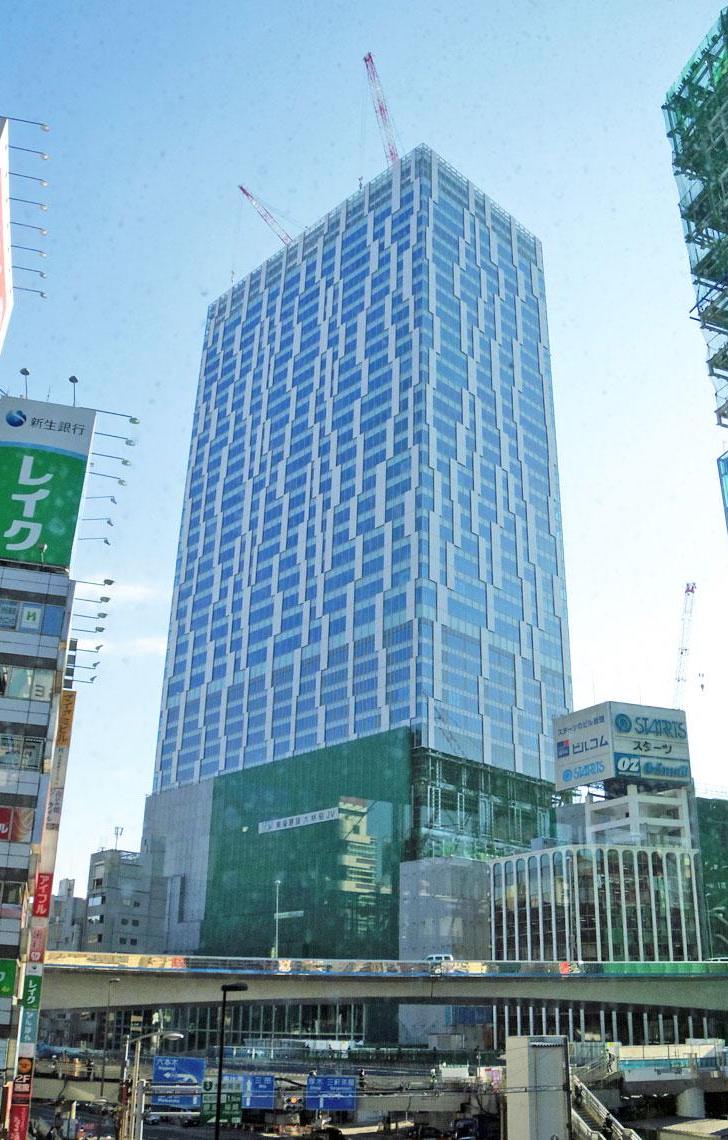
Shibuya Stream (Google will move to this building)
Last year, Google Japan announced that they would move their office to Shibuya from Roppongi.
The media reported that Google would come back to their birthplace. So, Google Japan started off their business in this IT hub.
Actually, Shibuya is called “Bit Valley” among Japanese tech stars. During the dot-com boom in the 1990s, many tech startups were based in Shibuya.
In fact, a number of IT both large corporations and startups have chosen Shibuya for their bases such Google, CyberAgent, Amazon, mixi, GMO, LINE, DeNA, DMM, etc.
The name “
People often compare Bit Valley to Japan’s Silicon Valley. Needless to say, its economic scale cannot be compared with Silicon Valley, but it has become more vibrant recently.
Why Shibuya?
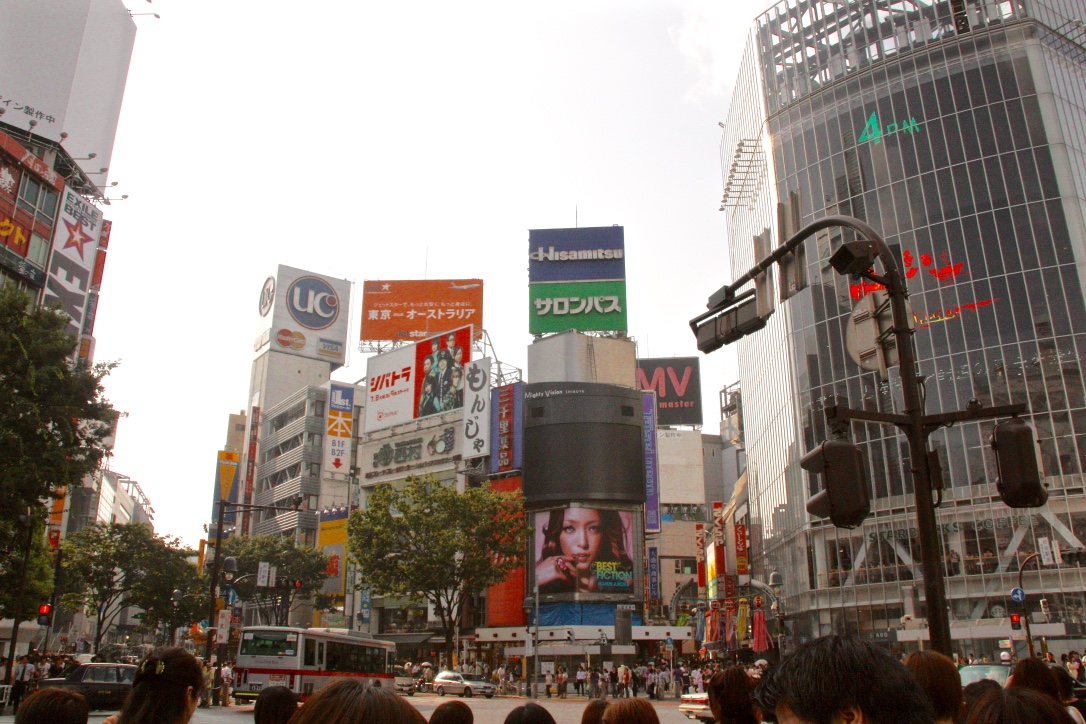
Shibuya’s success consists of multiple factors. Perhaps, one of the biggest reasons for that is a change in features of the city itself.
As many shopping malls opened, Shibuya has attracted young people rather than adults in terms of fashion, music, etc.
People even say, “if you want to know the latest trends, go to Shibuya”.
As a result, the city underwent a dramatic transformation, meaning now Shibuya is completely for young people, which has also attracted young entrepreneurs.
The Bit Valley Plan
Furthermore, when looking into the word “Bit Valley” itself, we could see some sort of efforts devoted by entrepreneurs of those days.
In 1992, Shibuya-based entrepreneurs expressed “The Bit Valley Plan” aimed at producing capable entrepreneurs from Shibuya.
Back in the day, Japanese companies hesitated to invest in startup firms. However, Bit Valley-based firms were able to get a high level of funding from Japanese large enterprises because entrepreneurs in Shibuya were actively geared toward creating an entrepreneur-friendly community.
The groundbreaking results have created a virtuous circle, attracting more investors and people considering starting up new businesses, which accelerated the creation of the startup-friendly environment.
Looking at the map “1999’s Bit Valley“, it can be clearly seen that there were a lot of tech startup firms in the district of Shibuya even back then though there weren’t as many shopping complexes as now.
Shibuya had already been a popular place among tech entrepreneurs.
2000. Mark City
2001. Cerulean Tower
2003. Roppongi Hills
2007. Tokyo Midtown
2012. Hikarie
A subcenter of Tokyo
Moreover, since Shibuya has been designated as a subcenter of Tokyo, the convenience of the public transportation system has also been improved.
There’re a number of train, subway and bus lines. Literally, you can go any direction from Shibuya.
This has enabled the district to enhance its reputation also as a business location. Consequently, not only have a number of IT people chosen Shibuya for launching their new businesses, but there’re still many IT firms headquartered in Bit Valley (haven’t moved out).
This fact has also attracted a ton of incidental businesses. As a result, Shibuya’s IT economic block is one of the largest in Japan’s tech scene.
As I mentioned earlier, Google Japan will come back to Bit Valley soon. This might cause a new sensation in Shibuya where you could see a lot of IT starts.
Sponsored Link





